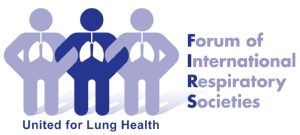Tobacco Control Expert Emphasizes the Importance of Smoking Alternatives for Tobacco Harm Reduction
Prof. David T. Sweanor, chair of the advisory board of the Centre for Health Law, Policy & Ethics at the University of Ottawa and a tobacco control expert with decades of experience, recently spoke about the health effects of cigarette smoking, emphasizing the importance of less dangerous nicotine delivery methods.
 “There have been many decades of research on the health effects of cigarette smoking, and we have known since at least the 1970s that the primary cause of the cancers, heart and lung disease is the repeated inhalation of smoke,” Sweanor said. “Our bodies are simply not designed to inhale smoke. We see similar disease patterns in those who cook food over open fires with poor ventilation and in firefighters exposed long-term to smoke inhalation.”
“There have been many decades of research on the health effects of cigarette smoking, and we have known since at least the 1970s that the primary cause of the cancers, heart and lung disease is the repeated inhalation of smoke,” Sweanor said. “Our bodies are simply not designed to inhale smoke. We see similar disease patterns in those who cook food over open fires with poor ventilation and in firefighters exposed long-term to smoke inhalation.”
However, the tobacco control expert, who has been actively involved in the development of efforts to reduce cigarette smoking in Canada and globally, makes a clear distinction between tobacco cigarettes and alternative tobacco products, like electronic cigarettes, snus and heat-not-burn tobacco products. Sweanor claims that while tobacco smoking causes about 20,000 deaths a day, these alternatives could save millions of lives every year.
“The nicotine itself is not the problem. The global health catastrophe we face is due to the way it’s delivered,” Prof. Sweanor said. “In short, for anyone wishing to tackle the global toll of 20,000 lives a day lost due to cigarette smoking, we need to remember just four words: ‘it’s the smoke, stupid'”.
The Canadian tobacco control expert said that it’s important for countries to give smokers viable nicotine delivery alternatives, and use price differentiating and marketing strategies to promote them as safer alternatives to smoking, instead of restricting access to them. Unfortunately, most Governments and tobacco control groups today see cigarette alternatives as risks rather than opportunities, often using the addictive nature of nicotine as an argument.
“They often fail to understand the absolutely enormous differences in risk between different nicotine products and inadvertently protect the cigarette business by seeing low-risk alternatives as a threat rather than an opportunity,” Sweanor said.
“Product substitution works and appears to work better than any other strategy we have used to date in reducing cigarette smoking. We have also seen this impact in Sweden, Norway, Iceland and other countries as well, and with a variety of low-risk non-combustible alternatives to cigarettes,” he added.
Japan is a very interesting example, as the Asian country has managed to reduce its number of adult smokers by a third in just over three years, thanks to the introduction of heat-not-burn tobacco products. Whether these products are considerably safer than tobacco cigarettes remains to be determined, but it’s a chance worth taking considering we already know that smoking kills 50% of cigarette users.
And we already have a pretty clear idea about the safety of smoking alternatives – the UK’s Royal College of Physicians states that e-cigarettes are likely to be at least 95-percent less harmful to humans than combustible tobacco – and about their efficacy in helping smoker quit. Yet vaping has been under fire from both Governments, tobacco control groups and NGOs in the last few years, with some claiming that it was even more dangerous than smoking. Everyone just chooses to ignore science and technology and the fact that smoking alternatives can save lives.
“Viable alternatives to cigarettes can reduce cigarette consumption dramatically, we can seize the opportunity technology now makes available to end the cigarette epidemic,” Prof David T. Sweanor said. “The combined offering in terms of consumer needs and wants, and the information, availability and pricing of the low-risk alternatives should ensure that the safer choice is an easy choice.”
















